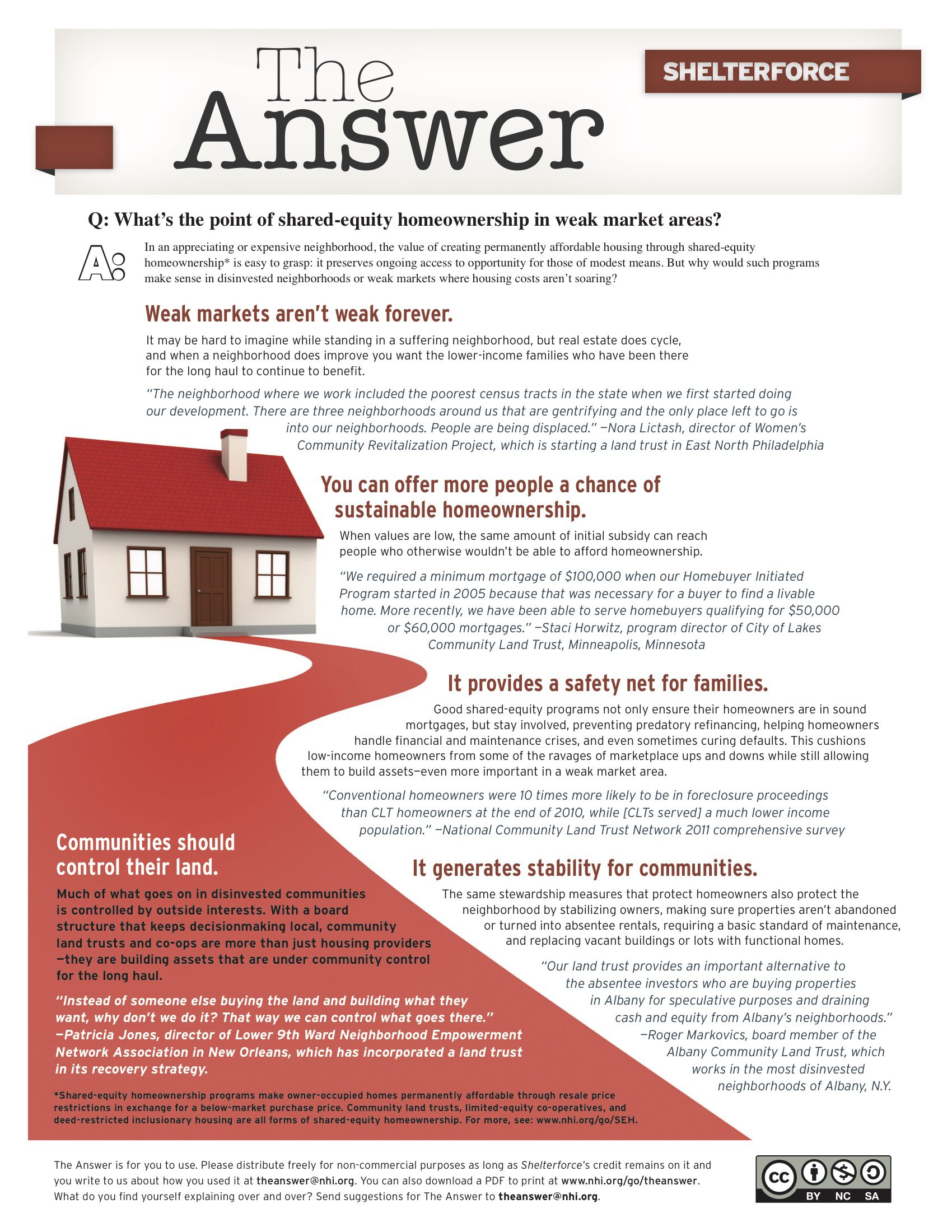Even before the much discussed (and critiqued) Washington Post “exposé” on the federal HOME program in 2011, HUD officials were purportedly concerned that too much of the HOME funds set aside for community housing development organizations (CHDOs) was going unspent, making the program look bad. Unfortunately, says Ed Gramlich, regulatory director of the National Low Income Housing Coalition (NLIHC), “rather than come up with creative ways to help build capacity, HUD is taking the punitive approach.”
CHDOs are nonprofits with community representation on their boards, and the National Affordable Housing Act specifies that 15 percent of a jurisdiction’s HOME funds be set aside for them. Until now CHDOs have been able to count volunteers, board members, and expert consultants toward the required demonstration of development capacity when qualifying for funds. But the revised HOME regs, expected out in the next couple months, would remove that option, requiring CHDOs to have someone with housing development experience on staff.
“A lot of CHDOs can’t afford that,” says Gramlich, “given their relatively low volume [of development]. This is especially true of rural CHDOs.” Frank Woodruff, director of the National Alliance of Community Economic Development Associations charges that the proposed change would “discourage collaboration and joint venture partnerships, increase CHDO operating costs amid dwindling resources, severely hamper the formation of emerging CHDOs, and unnecessarily drive up total costs on projects that historically are developed with little/no profit.”
Gramlich notes that a jurisdiction loses that 15 percent set aside if it doesn’t have a CHDO to give it to, and argues that the new standards are therefore likely to harm jurisdictions already struggling with a lack of resources and less likely to have large, staffed-up CHDOs. In its comment letter opposing the change, NLIHC suggested that HUD instead take advantage of the option the law gives for reallocating funds from low-performing CHDOs to intermediaries for capacity-building technical assistance, an option it says is underutilized.




Comments